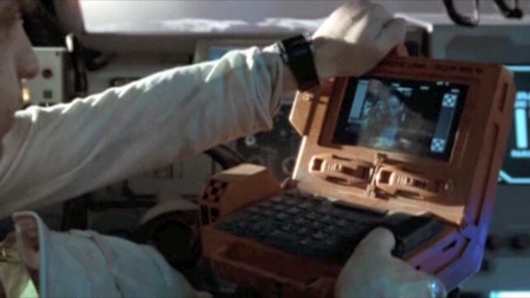(It’s good at the beginning of projects to research what’s come before, and Joe is pretty spectacular at finding references and explaining what’s interesting about each one. He’s done this for a few projects now, but we’ve never made his research public. Last year Joe put together a set of appearances of videophones in film. It’s a lovely collection, and it was a stimulating way to think around the subject! So I asked him to share it here. -Matt W)
Metropolis (1927)
Features wall-mounted analogue videophone. Joh Fredersen appears to use four separate dials to arrive at the correct frequency for the call. Two assign the correct call location and two smaller ones provide fine video tuning. He then picks up a phone receiver with one hand and uses the other to tap a rhythm on a panel that is relayed to the other phone and displayed as flashes of light to attract attention.
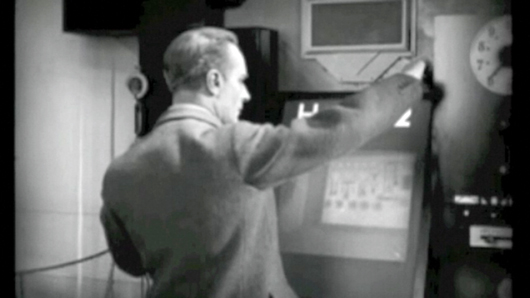
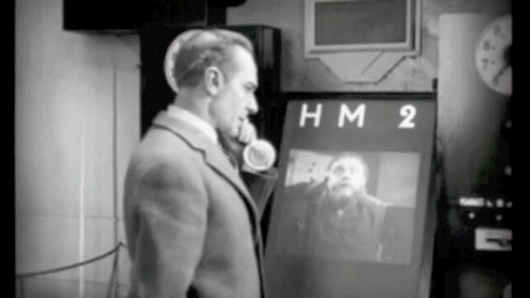
Transatlantic Tunnel (1935)
Features two very different pieces of industrial design at either end of the call.
This device displays similarities to the form of a TV set…
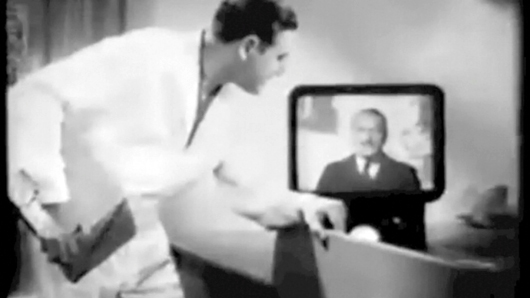
And this one has been designed to appear more like furniture. The screen is low down in a self-contained wooden unit designed a seated caller.
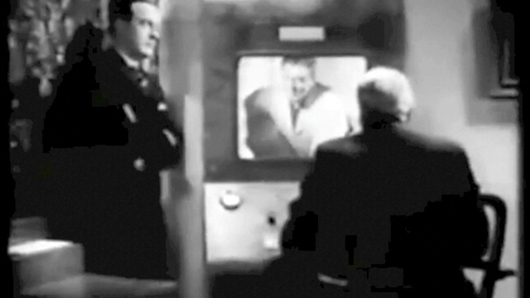
Out of the Unknown (1965)
User’s own image is reflected back to them until a connection is made. Possibly to confirm that the camera is working correctly. The hexagonal screen is an extension of a mobile chair.
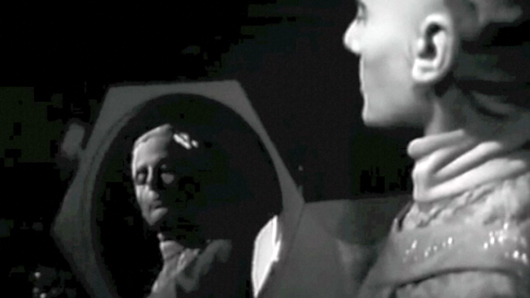
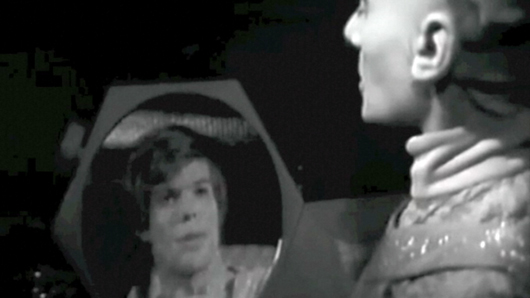
2001: A Space Odyssey (1968)
A public booth containing a large phone unit. The system communicates that it is in a ‘ready’ state through the screen. A call is made by entering a number into the type-pad and a connection established on pickup
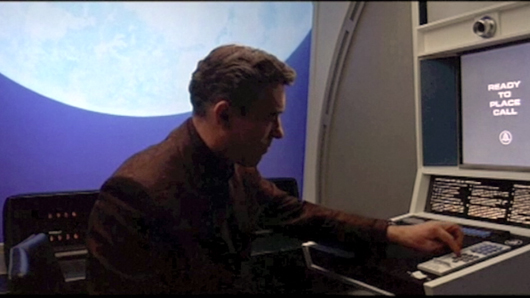
Colossus: The Forbin Project (1970)
We see five or six openly shared phones and connected screens sitting on a desk in the White House.
It is apparent that a single video feed can be broadcast to multiple screens in parallel, as below, or exclusively to a single one.
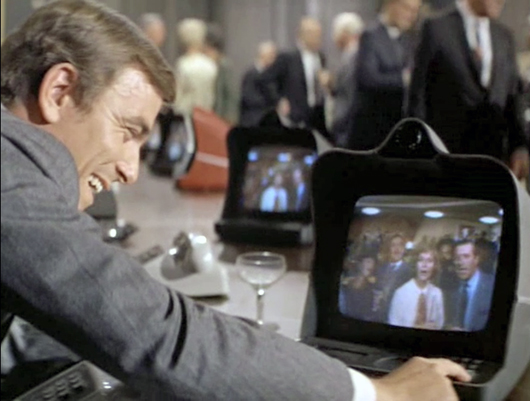
Space: 1999 (1975-1977)
The monotone blue phone screen has been designed into the very architecture of the craft.
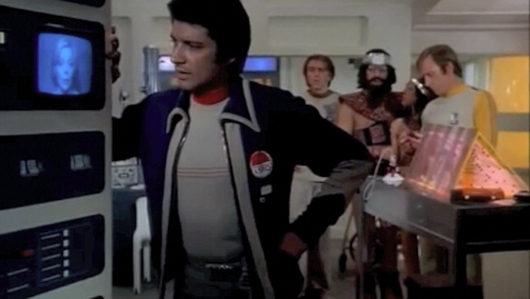
And here requiring a key to connect.
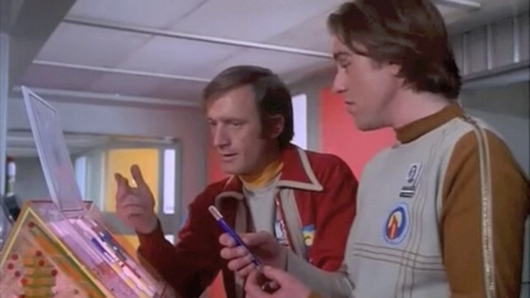
Blade Runner (1982)
An outdoor, public phone service. Network information is displayed on screen implying that it is subject to change. When Deckard begins to dial a ‘transmitting’ notification appears. The cost of the call is shown when the receiver line is closed.
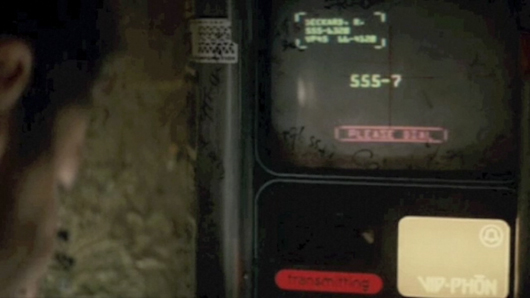
The screen is used as a canvas, covered in scrawled messages. A cross indicates the optimal position for viewer’s head.
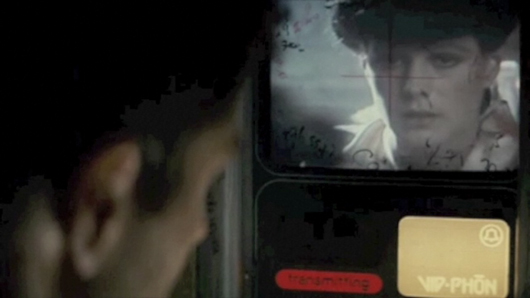
Back to the Future Part II (1989)
Marty McFly is contacted by Needles his coworker. The video feed features personal information about the person in view, favourite drinks and hobbies.
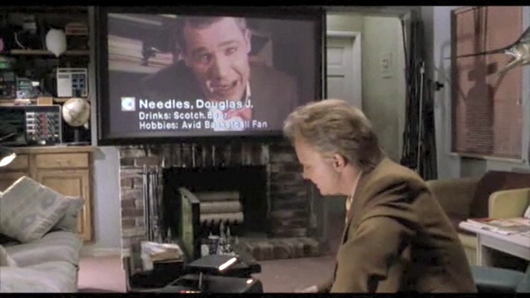
Real-time message input can be expressed as video overlays.
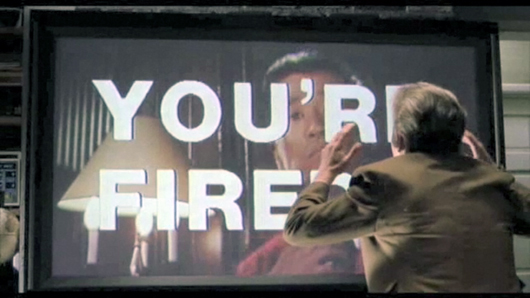
Or push print-outs.
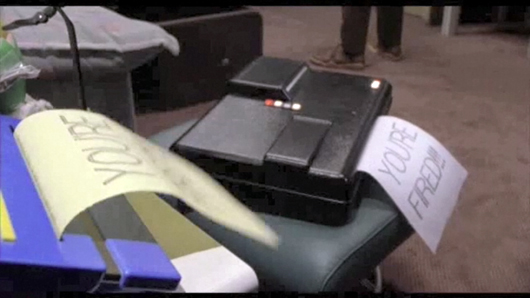
When not in use the screen displays a Van Gogh self portrait.
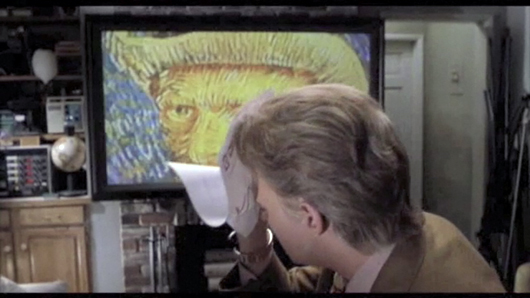
The Jetsons (1962-1988)
Videophones throughout the series. Rather than command desk space they lower from the ceiling when required. They appear to come with either a handset or microphone.
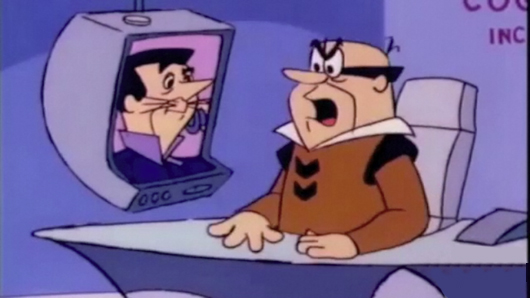
Star Trek II: The Wrath of Khan (1982)
Circular screen set into a square frame emerging from a pillar unit.
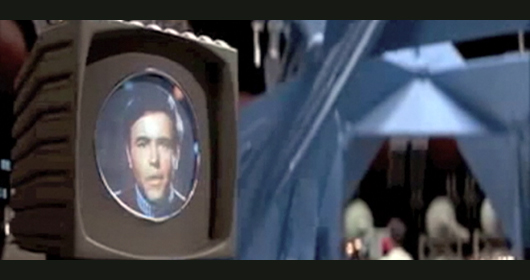
Gremlins 2: The New Batch (1990)
Shows a AT&T VideoPhone 2500 prototype with space for hand written addresses. When the video feed is lost the system defaults to a voice exchange through the handset.
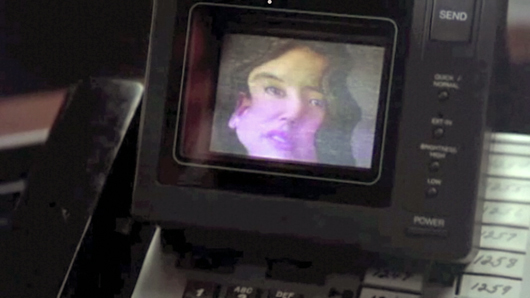
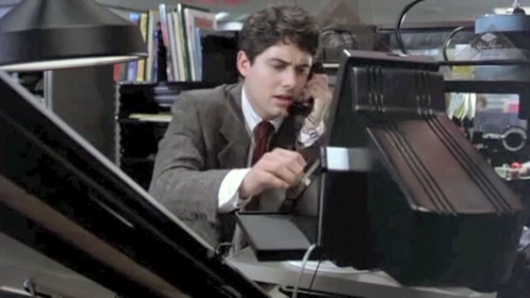
Star Trek Nemesis (2002)
Pop-up screen set into the desk. Appears when call is received. Only visible when required.
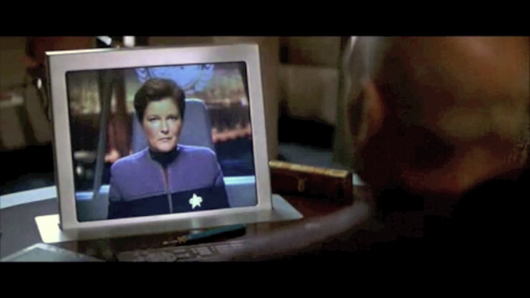
The Rock (1996)
One way video stream displayed on multiple, wall inset screens.
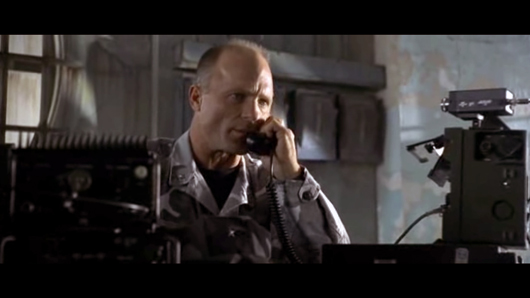
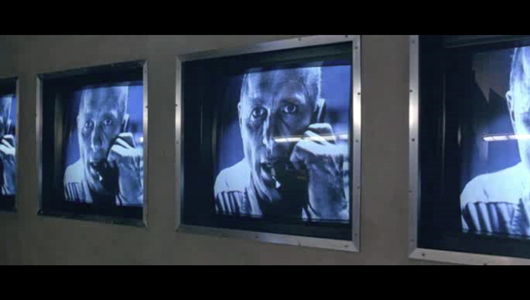
The Simpsons: Lisa’s Wedding (1995)
A “Picturephone” uses a rotary dial to make calls. A camera housed in the device is distinctly visible in a trapezium above the screen. Set in the future, the device seems to be a new invention that Marge isn’t quite used to yet, as she visibly crosses her fingers guaranteeing that Homer will behave at the forthcoming wedding.
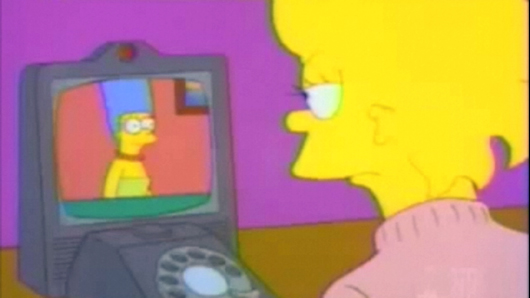
Moon (2009)
Ruggedised video phone for use in zero gravity. No function available for hiding outgoing video stream is evident as Sam Bell uses his hand to cover the camera.
